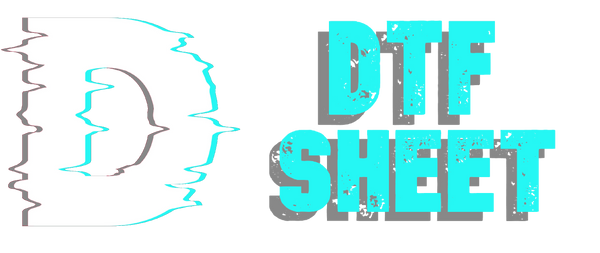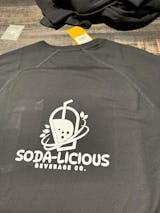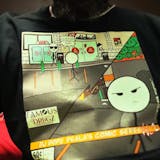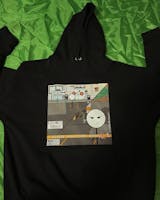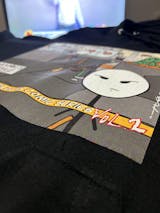Introduction
UV Direct to Film (DTF) printing is an exciting, fast-evolving technology designed for creating custom designs on hard surfaces like glass, metal, and ceramics. Unlike traditional fabric-based transfers, UV DTF uses a unique UV curing process to ensure vibrant, durable prints on non-porous surfaces. For dtfsheet.com users, knowing how the UV DTF process works can help you get the most out of your transfer sheets and achieve lasting, high-quality results.
In this guide, we’ll walk you through the steps of producing UV DTF transfers, covering the key stages, technical requirements, and tips for the best results. Whether you're a small business owner or just customizing items for fun, this guide has everything you need to know.
1. What is UV DTF Printing?
UV Direct to Film printing is a technique where UV-cured inks are printed onto a special film, which is then transferred to hard surfaces like glass, ceramics, and metal. Here’s what makes it unique:
- Made for Hard Surfaces: Perfect for non-fabric items such as glass, metal, ceramics, and certain plastics.
- UV-Cured Inks: The inks dry instantly under UV light, creating a hard, scratch-resistant layer.
- Easy Application: Once the printed film is ready, it’s simple to apply to items without any complex equipment.
Practical Tip:
If you’re buying UV DTF sheets from dtfsheet.com, your transfers will arrive pre-printed and ready to apply. Just make sure you’re working with a clean, smooth surface for the best adhesion.
2. Materials and Equipment You’ll Need
Creating UV DTF transfers requires specialized materials and equipment. Here’s what goes into the process:
- UV DTF Printer: A printer that works with UV-cured inks, which dry instantly under UV light.
- UV-Cured Ink: Special inks that cure with UV light to create vibrant, durable prints.
- Release Film: A special film that holds the ink until it’s transferred to your item.
- UV Light Source: Often built into the printer to cure the ink immediately.
- Adhesive Powder (Optional): Sometimes used to improve adhesion on certain surfaces, but not always necessary.
Quick Insight:
For dtfsheet.com customers, there’s no need to worry about printing these yourself! Just knowing about the materials can help you understand the process and troubleshoot if needed.
3. Applying UV DTF Transfers at Home
One of the biggest perks of UV DTF transfers is how easy they are to apply! Here’s a simple guide to get the best results:
Application Steps:
- Clean the Surface: Wipe down the area with isopropyl alcohol to remove dust and oils.
- Position the Transfer: Align the transfer on your item and make sure it’s centered.
- Apply Pressure: Use a squeegee or similar tool to press the film firmly against the surface.
- Peel the Film: Carefully remove the film backing, leaving the design adhered to the surface.
Practical Tip:
For the best finish, avoid applying UV DTF transfers on rough or textured surfaces. Smooth surfaces allow the design to bond firmly, creating a scratch-resistant, high-quality look.
4. Why Choose UV DTF Transfers?
UV DTF transfers come with some key benefits that make them ideal for hard surface customization:
- Durability: The UV curing process makes designs resistant to scratching, fading, and peeling.
- Vibrant Colors: UV inks maintain their color even under sunlight, perfect for items used outdoors.
- Wide Compatibility: Works on non-porous surfaces like glass, metal, and plastic.
- User-Friendly: The pre-printed sheets make application easy, even for beginners.
5. Trends in UV DTF Customization
UV DTF is gaining popularity for both professional and DIY projects. Some current trends include:
- Custom Glassware and Barware: Adding unique designs to drinkware like wine glasses and bottles.
- Personalized Phone Cases: Using UV DTF to create custom designs on plastic and metal phone cases.
- Decorative Tiles and Wall Art: Transforming ceramic tiles into custom home décor with ease.
Industry Insight:
As more people seek out personalized and sustainable products, UV DTF’s durable, eco-friendly appeal is only growing. Many small businesses are tapping into UV DTF to expand their offerings and create unique, customized items.
Conclusion
UV Direct to Film transfers offer a fantastic way to personalize hard surfaces with durable, vibrant designs. For dtfsheet.com customers, the process couldn’t be simpler—just upload your design, and you’ll receive pre-printed transfers that are ready to apply.
Whether you’re personalizing glassware, customizing phone cases, or adding flair to home décor, UV DTF transfers provide a professional-grade solution without needing any complex equipment. By understanding the basics of how they’re made and applied, you can create stunning, long-lasting designs with ease.
Key Takeaways:
- Simple Application: Clean the surface and apply the transfer for a smooth finish.
- High Durability: UV-cured inks protect your designs from fading and scratching.
- Versatile Compatibility: Works on a range of surfaces, including glass, metal, ceramics, and plastics.
- Popular Uses: Perfect for items like glassware, phone cases, and decorative tiles.
UV DTF printing is a modern, accessible way to bring custom designs to life on hard surfaces. With dtfsheet.com, it’s easier than ever to create high-quality, personalized items without the need for complicated setups.
